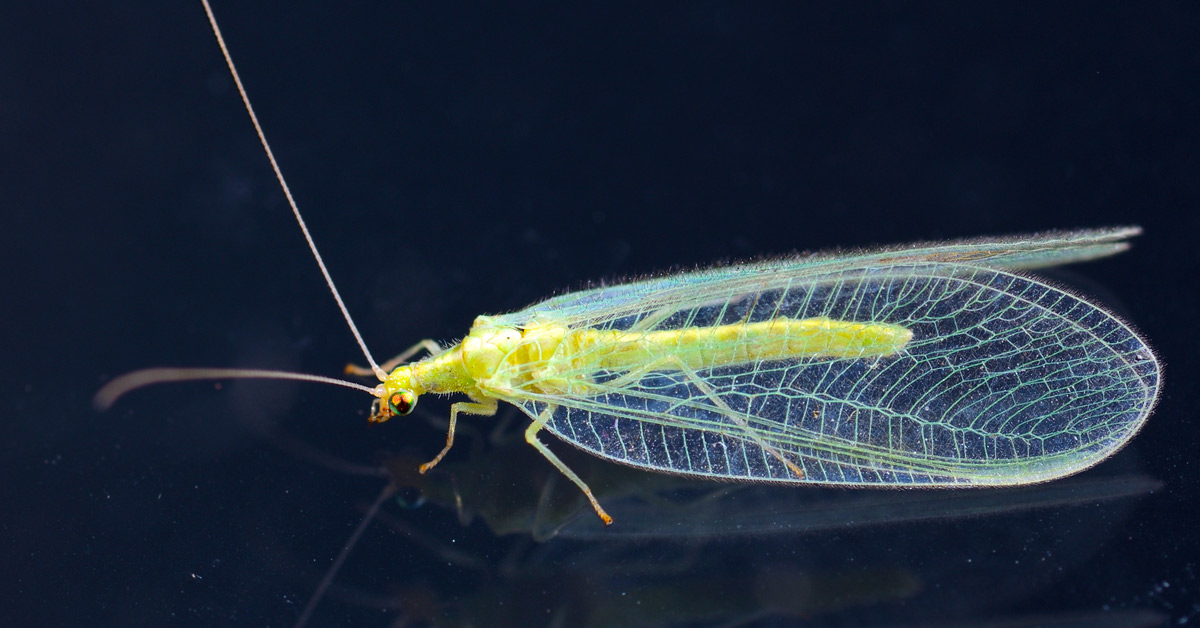
Third World Network summarises new study findings
Herbicides are only cursorily tested for effects on non-target arthropods as the assumption is that herbicides only kill insects indirectly by killing its host plants. However, a new study shows that direct oral exposure can be highly relevant for systemic pesticides such as glyphosate-based herbicides. In crop systems including glyphosate-tolerant genetically modified crops, these herbicides and their breakdown products are ingested by crop-associated beneficial insects.
The study tested the effects of oral uptake of the Roundup formulation WeatherMax on larvae of the lacewing Chrysoperla carnea, below the recommended application doses. Long-term oral exposure of C. carnea larvae throughout its juvenile life stages resulted in developmental arrest, impaired cocoon formation and high mortality.
The hazard caused by direct insecticidal action of glyphosate-based herbicides after oral uptake is highly relevant for environmental safety and reveals a gap in regulatory risk assessments that should urgently be addressed, specifically in light of on-going insect decline.
Source of comment: Third World Network
---
A Roundup herbicide causes high mortality and impairs development of Chrysoperla cornea (Stephens) (Neuroptera: Chrysopidae)
N. Defarge, M. Otto & A. Hilbeck
Science of The Total Environment, Volume 865, 2023
https://doi.org/10.1016/j.scitotenv.2022.161158
www.sciencedirect.com/science/article/pii/S0048969722082614?via%3Dihub
23 December 2022
Abstract
Glyphosate has and is being used extensively in herbicide formulations worldwide. Thus, glyphosate-based herbicides (GBH) substantially add to the environmental load of pesticides and warrant a strict risk assessment. Ecotoxicological testing of herbicides focuses on non-target plants and higher animals while direct effects on arthropods are only cursory tested on the premise of contact exposure. However, oral exposure, as we show in our case, can be highly relevant for systemic pesticides, such as GBH. Specifically, in crop systems including genetically modified crops that are tolerant to GBH, these herbicides and their breakdown products are present both internally and externally of the crop plants and, therefore, are ingested by the crop-associated arthropod fauna.
We tested the effects of oral uptake of the Roundup formulation WeatherMax on larvae of the lacewing Chrysoperla carnea, a model organism in ecotoxicity testing programs. Long-term oral exposure of C. carnea larvae throughout its juvenile life stages was tested with concentrations ranging from 0.001 to 1 % dilution, thus, lower than the 1.67 % recommended for field applications. Inhibition of metamorphosis was observable at 0.1 % but at a concentration of 0.5 %, GBH significantly impaired cocoon formation and led to massive lethal malformations. At GBH concentration of 1 % half of the individuals remained permanent larvae and no adult hatched alive. The effects observed followed a clear dose-response relationship.
The hazard caused by direct insecticidal action of GHB after oral uptake is highly relevant for the environmental safety and reveals a gap in regulatory risk assessments that should urgently be addressed, specifically in light of the on-going insect decline.










